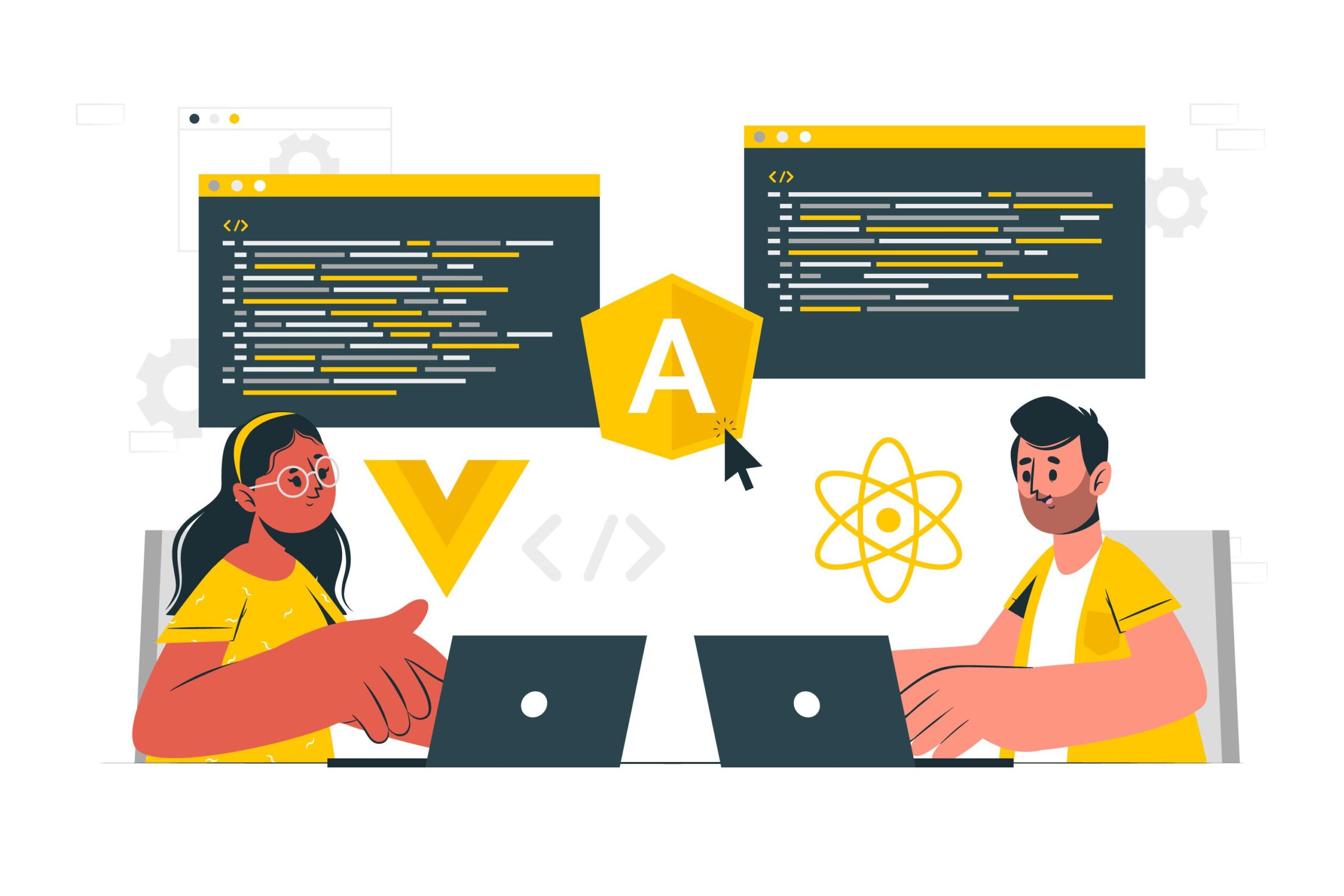The world of e-commerce is continually evolving, and businesses of all sizes are looking for robust and scalable solutions to tap into the immense potential of online sales. To meet these demands, developers are turning to .NET, a versatile framework that can be a game-changer for e-commerce businesses. In this comprehensive guide, we will explore the essential aspects of building e-commerce solutions with .NET development, from the basics to advanced techniques. By the end of this article, you’ll have a solid understanding of how .NET can help you create a powerful e-commerce platform.
The Foundation of E-commerce Solutions with Dotnet
Overview of .NET Framework
.NET is a powerful framework for building modern software applications. It provides a rich set of libraries, language support, and tools to create robust, secure, and scalable solutions. .NET is known for its versatility, allowing developers to create web applications, desktop applications, and mobile apps, making it an ideal choice for e-commerce development.
.NET Core vs. .NET Framework
Before diving into e-commerce development, it’s essential to understand the difference between .NET Core and .NET Framework. .NET Core is the modern, open-source, and cross-platform version of .NET, while .NET Framework is Windows-specific. For e-commerce solutions, .NET Core is often preferred because of its flexibility and cross-platform compatibility.
Benefits of Using .NET for E-commerce
.NET offers several advantages for e-commerce development, including:
Strong security features.
- A vast ecosystem of libraries and tools.
- Scalability to handle high traffic loads.
- Easy integration with third-party services and APIs.
Setting Up Your Development Environment
To begin building an e-commerce solution with .NET, you need a well-configured development environment. Here are the key steps to set up your environment:
Choosing an IDE
Choosing the appropriate Integrated Development Environment (IDE) is of utmost importance. Visual Studio and Visual Studio Code are popular choices among .NET developers. These IDEs offer features like IntelliSense, debugging tools, and extensions for .NET development.
Installing .NET SDK
The .NET Software Development Kit (SDK) is a fundamental requirement for the development and execution of .NET applications. You can download and install the SDK from the official .NET website, ensuring that you have the necessary tools for development.
Version Control with Git
Using version control is critical for collaborative development. Git is the most widely used version control system, and platforms like GitHub and GitLab provide excellent hosting services for .NET projects.
Now that your development environment is set up, it’s time to start building the components of your e-commerce platform.
Building a Scalable E-commerce Backend
The backend of an e-commerce platform is responsible for managing product listings, user data, and transactions. .NET provides robust tools for building a scalable and secure backend.
Introduction to ASP.NET
ASP.NET is a web framework that forms the core of many e-commerce solutions. It offers features for routing, authentication, and web services, making it a powerful choice for building the backend of your e-commerce application.
Designing Data Models
E-commerce platforms deal with a substantial amount of data, from product details to customer orders. You’ll need to design efficient data models that can handle these data loads while ensuring data consistency and security.
Database Connectivity with Entity Framework
Entity Framework is a popular Object-Relational Mapping (ORM) tool in the .NET ecosystem. It simplifies database interactions by allowing you to work with data as .NET objects, reducing the complexity of SQL queries. This approach is highly beneficial when managing product catalogs, user profiles, and order histories.
Crafting a User-Friendly Frontend
The frontend of your e-commerce platform is what users interact with, so it’s essential to make it user-friendly and appealing. .NET provides several options for creating the frontend.
ASP.NET MVC for Web Development
ASP.NET MVC (Model-View-Controller) is a design pattern that separates the application’s concerns into three main components: models, views, and controllers. This separation enhances the maintainability and scalability of your frontend.
Frontend Frameworks (e.g., React, Angular)
Many e-commerce solutions use modern frontend frameworks like React and Angular to create dynamic and interactive user interfaces. These frameworks can be integrated with asp.net application development company services for seamless frontend-backend communication.
Implementing Responsive Design
In today’s mobile-driven world, it’s essential to implement responsive design to ensure your e-commerce platform looks and works well on a variety of devices, from desktops to smartphones and tablets.
Integrating Payment Gateways
A core component of any e-commerce platform is the ability to process payments securely and efficiently. .NET offers various options for integrating payment gateways.
Payment Processing in E-commerce
Payment processing is a sensitive area that requires robust security measures. It involves capturing payment information, authorizing transactions, and handling refunds or disputes. Ensure that your payment processing adheres to industry standards and regulations.
Stripe, PayPal, and Other Payment Gateways
Integrating popular payment gateways like Stripe and PayPal can simplify the payment process for your customers. These services offer easy-to-use APIs and support various payment methods, making them a preferred choice for many e-commerce businesses.
Securing Payment Transactions
Security is paramount in e-commerce, especially when handling payment data. Utilize encryption, tokenization, and other security practices to protect sensitive information.
Enhancing User Experience
Creating a great user experience is vital for retaining customers and driving sales. .NET provides various tools and strategies for enhancing user experience.
Leveraging Caching
Caching frequently accessed data can significantly improve the performance of your e-commerce platform. .NET offers options for implementing caching at various levels, such as in-memory caching and distributed caching.
Implementing Search and Filters
Efficient product search and filtering are essential features of an e-commerce platform. You can use tools like Elasticsearch or Solr in combination with .NET to enable fast and relevant search results.
Personalization and Recommendations
Personalization features, such as product recommendations and personalized content, can boost sales and customer satisfaction. Implement algorithms and machine learning models to provide users with tailored experiences.
Handling Security and Compliance
E-commerce platforms deal with sensitive customer data, making security and compliance critical aspects of development.
Data Protection and GDPR Compliance
If your e-commerce platform serves customers in the European Union, compliance with the General Data Protection Regulation (GDPR) is essential. Ensure that you handle user data with transparency and follow GDPR requirements.
SSL Certificates and HTTPS
Secure Socket Layer (SSL) certificates and HTTPS are prerequisites for secure data transmission. Make sure your platform uses these security measures to protect customer information during transactions.
Implementing Authentication and Authorization
Effective user authentication and authorization mechanisms are essential. .NET offers identity management systems and role-based access control to ensure only authorized users access specific parts of your platform.
Scaling Your E-commerce Solution
Scalability is a key factor in the success of your e-commerce platform, especially during high-traffic events like sales and promotions.
Load Balancing
Distribute incoming traffic across multiple servers using load balancing to prevent overloads and ensure consistent performance.
Optimizing Database Queries
As your platform grows, the efficiency of your database queries becomes crucial. Optimize queries and consider using database replication and sharding for improved performance.
Caching Strategies for High Traffic
Caching strategies, including content caching and distributed caching, can significantly reduce the load on your backend servers and improve response times during traffic spikes.
Deploying and Managing Your E-commerce Platform
Deploying your e-commerce platform to a production environment requires careful planning and management.
Deployment Options (Azure, AWS, etc.)
Choose a reliable cloud hosting provider like Microsoft Azure or Amazon Web Services (AWS) to deploy your application. These platforms offer scalability and monitoring tools to ensure high availability.
Continuous Integration and Deployment (CI/CD)
Implementing a CI/CD pipeline streamlines the deployment process. It automates testing, builds, and deployments, reducing the risk of errors and downtime.
Monitoring and Error Tracking
Set up monitoring tools and error-tracking systems to proactively identify and address issues. Services like Application Insights for Azure or third-party monitoring solutions can help you keep your platform running smoothly.
Future Trends in E-commerce with .NET
With the continuous evolution of technology, e-commerce trends also undergo changes. Stay ahead of the curve by exploring these future trends in e-commerce development with . NET.
Headless E-commerce Solutions
Headless e-commerce decouples the frontend and backend, allowing for more flexibility and customization. Explore how .NET can be used in headless e-commerce architectures.
AI and Machine Learning for E-commerce
Leverage artificial intelligence and machine learning to enhance product recommendations, automate customer support, and optimize pricing strategies.
Voice Commerce and Mobile Apps
Voice commerce is on the rise, and mobile apps remain a significant channel for e-commerce. Consider how .NET can be used to develop voice-activated shopping experiences and mobile apps.
Conclusion
Building e-commerce solutions with dotnet development services is an exciting journey that requires a combination of technical skills, creativity, and business acumen. This comprehensive guide has provided you with a solid foundation to get started and explore the various aspects of e-commerce development with .NET. Remember that the e-commerce landscape is ever-changing, so staying updated on the latest technologies and trends is crucial to your success in this dynamic field. Whether you’re a seasoned developer or a newcomer to e-commerce, .NET offers a robust and adaptable platform to create the next generation of e-commerce solutions. Good luck on your e-commerce development journey!





